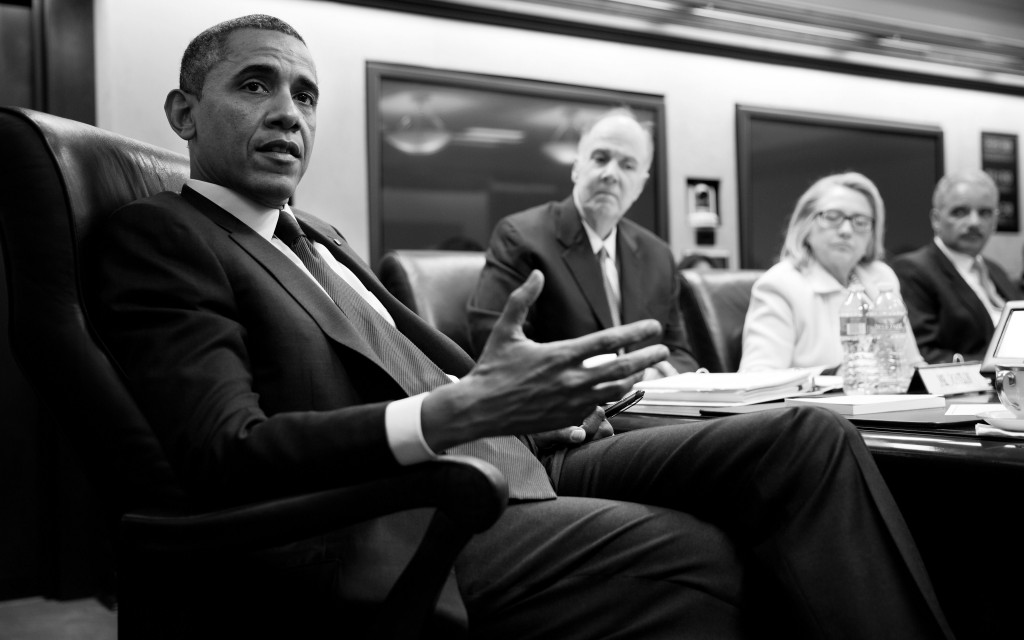Sir Hew Strachan, an advisor to the Chief of the British Defense Staff, made some ripples across the pond with his judgment on the U.S. president’s foreign policy. “Obama has no sense of what he wants to do in the world,” Strachan said.
Coming from a world-class military historian, it was a stunning rebuke.
The Daily Signal depends on the support of readers like you. Donate now
Strachan gives Mr. Obama’s Middle East policy, specifically his muddled approach to Syria, two thumbs down. Obama’s initiative there, he says, has taken the situation on the ground “backwards instead of forwards.” That’s just one conclusion he delivers in his forthcoming book, The Direction of War, which evaluates how modern political leaders utilize strategy.
Portraying Obama as the Inspector Clouseau of foreign policy may pump Strachan’s book sales. (After all, it worked for Gates.) But his assessment seems a bit off the mark.
Since the start of his second term, Mr. Obama has exhibited a pretty clear idea of what he wants to do in the world—and that is to have as little as possible to do with it until he gets out of office. The President’s primary objective appears to be “no more Benghazis”—just ride out the second term, go build a library, and then mimic the line of his first former defense secretary: “Hey, everything was fine when I left!”
A penchant for risk-aversion seems to be the chief hallmark of U.S. foreign policy today. The “red line” over Syria’s use of chemical weapons, a particular target of Strachan’s academic scorn, is a case in point. It was a way of doing nothing about that nation’s spiraling civil war. No one appeared more unprepared than the president when it turned out that the red line would actually require the U.S. to get engaged. Likewise, leaping at the chemical weapons deal was all too predictable. It offered the White House a quick exit from getting drawn more deeply into the conflict.
But Obama faces an enduring dilemma. As Syria showed, while he might want to leave the world alone, the world doesn’t seem to feel the same way about the United States. There is just too much time left in office to coast till the end, pack up the Nobel Prize, and move back to Hawaii. The Oval Office has found it has to do something to fill the vacuum, opening space for other influences to drive foreign affairs—as long as they don’t push the president too far from his chosen path.
So a second vector has sprouted up to drive the direction of U.S. foreign policy, one not too far from the president’s heart: an infatuation with multilateral process. This scratches Mr. Obama’s progressive itch. It is an item of progressive faith that, as long as we’re “engaged in a process” and mean well, we must be making progress. Thus, multilateral process became the fallback solution for Syria, once the red line gave way. The U.S. is currently engaged in multiparty talks about Syria in Geneva. Likewise, the administration is upbeat about “progress” between the Israelis and the Palestinians, because Secretary of State John Kerry has worked hard to get peace “talks” going again. And then, there is the ultimate bright, shiny object: nuclear talks with Iran.
A third vector is emerging as well: a kind of magical thinking among administration officials which holds that vectors one and two are actually working so well that, by the end of the president’s term, the entire Middle East will have been transformed. So, for example, there is happy talk that engagement with Iran will lead to working with Tehran on helping the US disengage from Afghanistan, settle things down in Iraq, and end the war in Syria.
For now the president seems happy to bundle these three vectors to guide what he sees as his coherent vision of a low-risk, run-out-the-clock strategy.
Contrary to what Strachan asserts, the president does have a sense of what he is doing. The president’s only problem is there are no signs that the three vectors are converging on anything that makes the region look like the land of milk and honey.
The odds of the Geneva talks playing a decisive role in resolving the Syrian civil war grow longer by the day. Vicious infighting among the insurgent groups and ramped-up support for the Assad regime by Moscow and Tehran are far more likely to drive the outcome. The “best case” scenario thus is a Balkanized Syria, with an Al Qaeda safe haven, huge displaced populations, and an occasional stream of car bombings from Damascus to Beirut.
As for Iran, while the administration thinks it has bought six months of “wait and see,” the reality is that, when the clock stops ticking, the West will be no more confident it can shut down an Iranian nuclear program than it is now. Meanwhile, the once-effective sanctions regime will have fallen apart, and the long sought U.S.-Iranian rapprochement will remain but the stuff of dreams.
Meanwhile, the president’s policy of disengagement from Iraq is shaping up like a disaster. It is reaffirming Henry Kissinger’s truism, “Unilateral withdrawal is not victory.” And the Israeli-Palestinian peace process remains moribund. There are no talks, just U.S. officials talking about talks.
If Egypt successfully implements its new constitution, elects a government, and puts the Arab Spring back on course, it will be no thanks to a White House that has vacillated between displaying complete indifference and casting annoying catcalls from the sidelines.
Strachan’s explanation may be off, but the result is the same. It’s hard to see the vectors of Obama’s foreign policy leading anywhere but nowhere.
James Jay Carafano is vice president of defense and foreign policy issues at The Heritage Foundation.





























